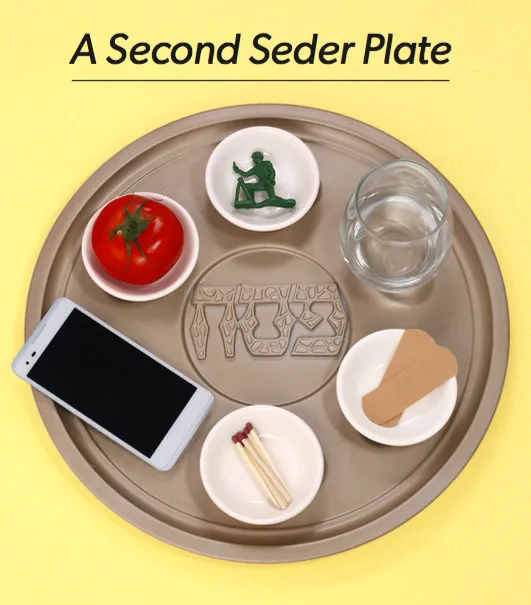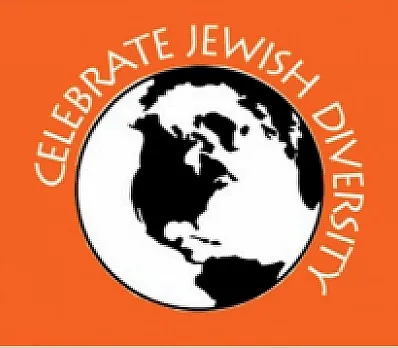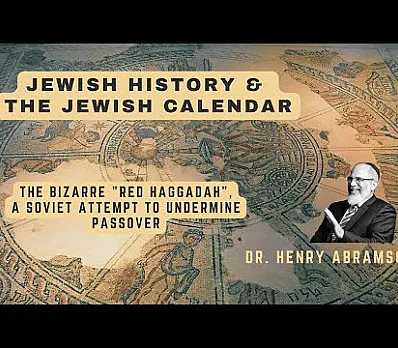#SecondSederPlate for Today's Refugees

Passover is replete with symbols. Each item on the traditional seder plate recalls a different part of the Exodus story, and meaningful symbols are being added all the time.
This year, Jewish World Watch suggests creating a Second Seder Plate for your table, to help you identify with the realities of the tragic present being experienced by so many people today in JWW’s areas of focus. About a third of those fleeing genocide and mass atrocities today live as refugees under dire conditions outside their native countries.
You can adapt your Second Seder Plate to reflect your own concerns. The one we have created contains new symbols for age-old problems – and in some cases offers some modern solutions – focused on the vulnerable populations Jewish World Watch serves across the globe.
We hope your Second Seder Plate will inspire new conversations at your seder and encourage everyone around the table to take action to help those in need. Chag sameach.
To download full-color PDF copies of this guide, please visit jww.org/SederSederPlate. And please don't forget to share: #SecondSederPlate
-
Why is a tomato on our Second Seder Plate?
The tomato reminds us that everyone needs food to survive, but displaced people often don’t get sufficient rations. Creating a garden, however, is possible, even in an African refugee camp. No space? No water? No seeds or good soil? No problem. You can grow a lot with limited resources thanks to perma-gardening, a highly efficient farming system that allows refugees to grow nutritious crops year-round by using improved soil fertilization methods and wastewater.
FACT: More than 300,000 Darfuris currently live in refugee camps in eastern Chad, their home since fleeing the genocide that began in 2003. The food rations they receive are not enough to live on.
ACT: Through perma-gardening, Darfuri refugees can produce their own food and become more self-reliant. Donate to help Jewish World Watch provide a refugee family with the skills and tools to start a perma-garden.
DISCUSS: How can you create your own efficient garden?
Learn more about Jewish World Watch’s perma-gardening efforts at jww.org/perma-gardening
-
Why is a glass of water on our Second Seder Plate?
Unlike the salt water on our traditional seder plate, which symbolizes our enslaved ancestors’ bitter tears, this water represents a source of hope. Fresh water is in short supply in the refugee settlements housing survivors who fled atrocities in South Sudan, but drilling new wells can provide clean water.
FACT: More than 2 million South Sudanese have fled civil war and man-made famine. Many have settled in overcrowded camps in northern Uganda, where there is deplorable sanitation and not enough safe water.
ACT: Jewish World Watch is drilling eight essential wells in Uganda’s Palabek Refugee Settlement this year. With your support we can supply even more clean water for thousands of refugees.
DISCUSS: List all the ways that you could save water on a daily basis.
Learn more about Jewish World Watch’s efforts to drill borehole wells at jww.org/cleanwater
-
Why is a cell phone on our Second Seder Plate?
On most nights, we use our phones to talk, text and check social media, but on this night we turn them off. This phone reminds us of the conflict minerals mined in the Democratic Republic of the Congo, where children are often forced to work under unsafe conditions.
FACT: The mining of tin, tungsten, tantalum, gold and other minerals such as cobalt often supports armed groups in the Congo, and impoverished children are often the ones doing the mining to support their families. Sending Congolese children to school is the best way to keep them from working in the mines, but they need help covering school fees and other related expenses to get an education.
ACT: Research products before you buy them – your cell phone, your hybrid car and more – to make sure the company you’re buying from is making the best effort to responsibly source its materials. Keep children out of mines by helping Jewish World Watch pay for their school fees.
DISCUSS: How do your decisions about what to buy affect others?
Learn more about Jewish World Watch’s efforts to ensure the conflict-free status of mines in the Congo a jww.org/conflictminerals
-
Why are matches on our Second Seder Plate?
Fire isn’t one of the plagues in the Passover story, but it could have been – its destructive nature is well known. For the Rohingya, an ethnic minority living in Myanmar (formerly known as Burma), the military has used fire to destroy many villages in brutal attacks. Survivors urgently need emergency supplies, but the Rohingya also need U.S. lawmakers to pass legislation to help protect them and prevent further violence.
FACT: Since late August, more than 688,000 Rohingya have fled ethnic cleansing in Myanmar and crossed into neighboring Bangladesh, where they have created the world’s largest refugee settlements.
ACT: Ask your representatives to support bills currently being considered in the U.S. Senate and House of Representatives supporting human rights in Myanmar.
DISCUSS: How is it possible that genocide is still happening in the 21st century?
Learn more about Jewish World Watch’s advocacy efforts and send a letter to your representatives at action.jww.org
-
Why is a toy on our Second Seder Plate?
A disturbing number of today’s refugees are children. Across the globe, nearly 1 child in 200 is a refugee. This adds up to tens of millions of children displaced by violence, poverty and other factors. Whole generations are being born in refugee camps, where they often lack proper nutrition, education and opportunities to play.
FACT: Some 8.6 million Syrian children are in immediate need of aid. Some 2.6 million Syrian children are living as refugees or on the run. Of the more than 688,000 Rohingya who have fled Myanmar for camps in Bangladesh since August, nearly 400,000 are children.
ACT: Support Jewish World Watch’s many programs offering educational assistance to children and the schools that serve them.
DISCUSS: How do you think violence and displacement affect children?
Learn more about Jewish World Watch’s efforts to educate displaced children at jww.org/projects
-
Why is a bandage on our Second Seder Plate?
Too many innocent people wounded during Syria’s civil war lack life-saving medical aid because large humanitarian organizations cannot enter areas being actively bombed. Jewish World Watch has partnered with an organization that transports essential supplies directly to doctors working to save lives deep inside the heart of the conflict.
FACT: Syria’s civil war has killed nearly 500,000 people – 55,000 of them children. It has also left half of the country’s population displaced.
ACT: Support Jewish World Watch’s efforts to transport supplies to doctors and hospitals in the heart of the conflict.
DISCUSS: What would it be like to be wounded and without adequate medical supplies?
Learn more about Jewish World Watch’s medical shipments in Syria at jww.org/syria
Inspired to create
your own Haggadah?
Make your own Haggadah and share with other Seder lovers around the world
Have an idea
for a clip?
People like you bring their creativity to Haggadot.com when they share their ideas in a clip
Support Us
with your donation
Help us build moments of meaning and connection through
home-based Jewish rituals.
OUR TOP CONTRIBUTORS
Passover Guide
Hosting your first Passover Seder? Not sure what food to serve? Curious to
know more about the holiday? Explore our Passover 101 Guide for answers
to all of your questions.






















